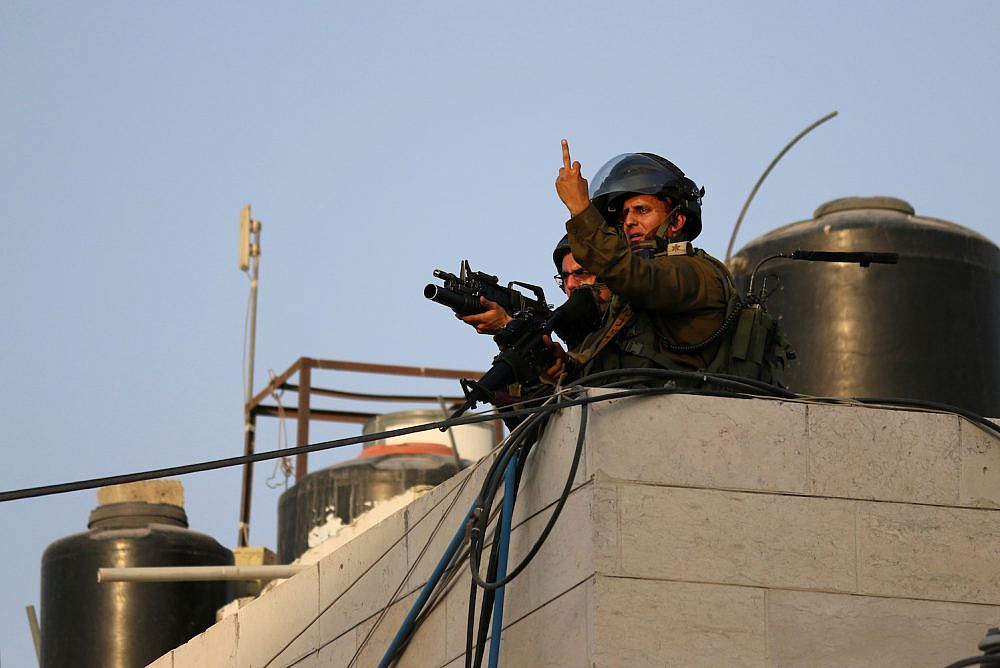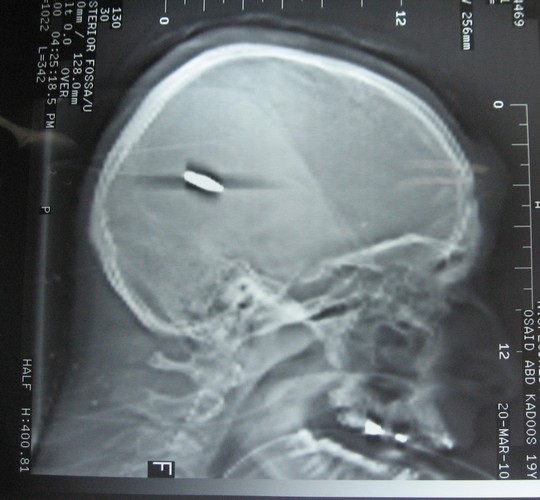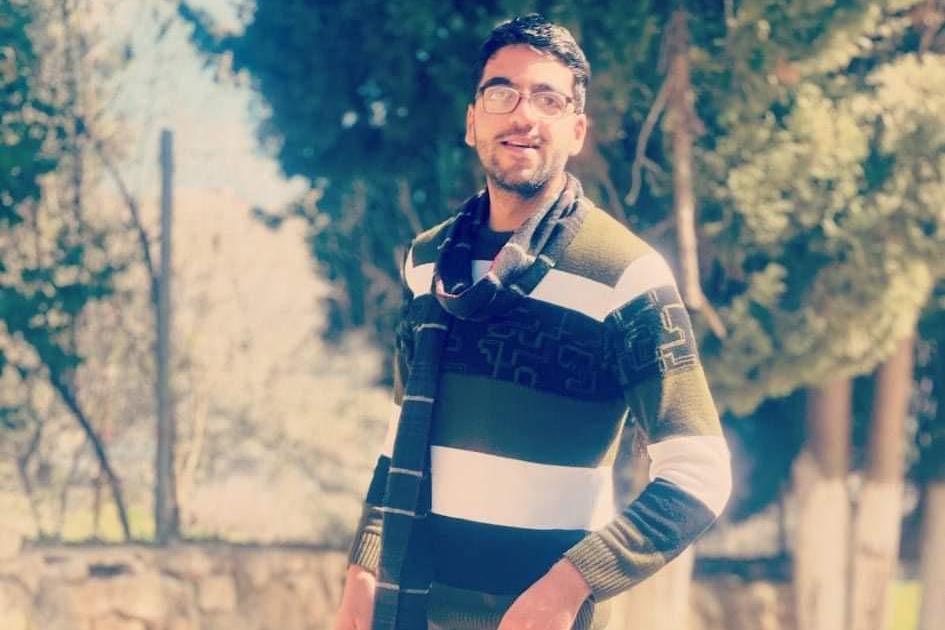On July 4, more than two months after Palestinian journalist Shireen Abu Akleh was shot and killed while reporting in the occupied West Bank, U.S. officials concluded that she was “likely killed” by an Israeli soldier. According to a statement delivered by State Department Spokesperson Ned Price, ballistic experts could not conclude who had fired the bullet that killed Abu Akleh, since the bullet fragment recovered from her body had been badly damaged.
And yet, Price said, the experts “found no reason to believe that this was intentional,” a statement that understandably angered the Abu Akleh family, particularly in light of a number of investigations by major media outlets, including the Washington Post, Bellingcat, The New York Times, and CNN.
Abu Akleh was killed by a direct shot to her head during a raid by Israeli soldiers on the Jenin Refugee Camp on May 11. She was wearing a flak jacket and a helmet that clearly stated “PRESS.” Palestinian reporters who were at the scene said Abu Akleh’s killing was no mistake, and that they were deliberately fired on by Israeli soldiers, while Israeli authorities claimed that it is likely Palestinian gunmen had been responsible for the killing.
The U.S. investigation seems to confirm what IDF Chief of Staff Aviv Kochavi said immediately following the incident: “One thing is clear: no IDF soldier deliberately shot the journalist. We have investigated and looked into this. This is the only conclusion.” The IDF Spokesperson’s Unit then added that it was “impossible to establish whether she was killed by Palestinian gunmen who opened massive fire in the area or accidentally by an IDF soldier.” The spokesperson also referred to the Palestinian journalists who were in the vicinity of the killing as being “armed with cameras.”
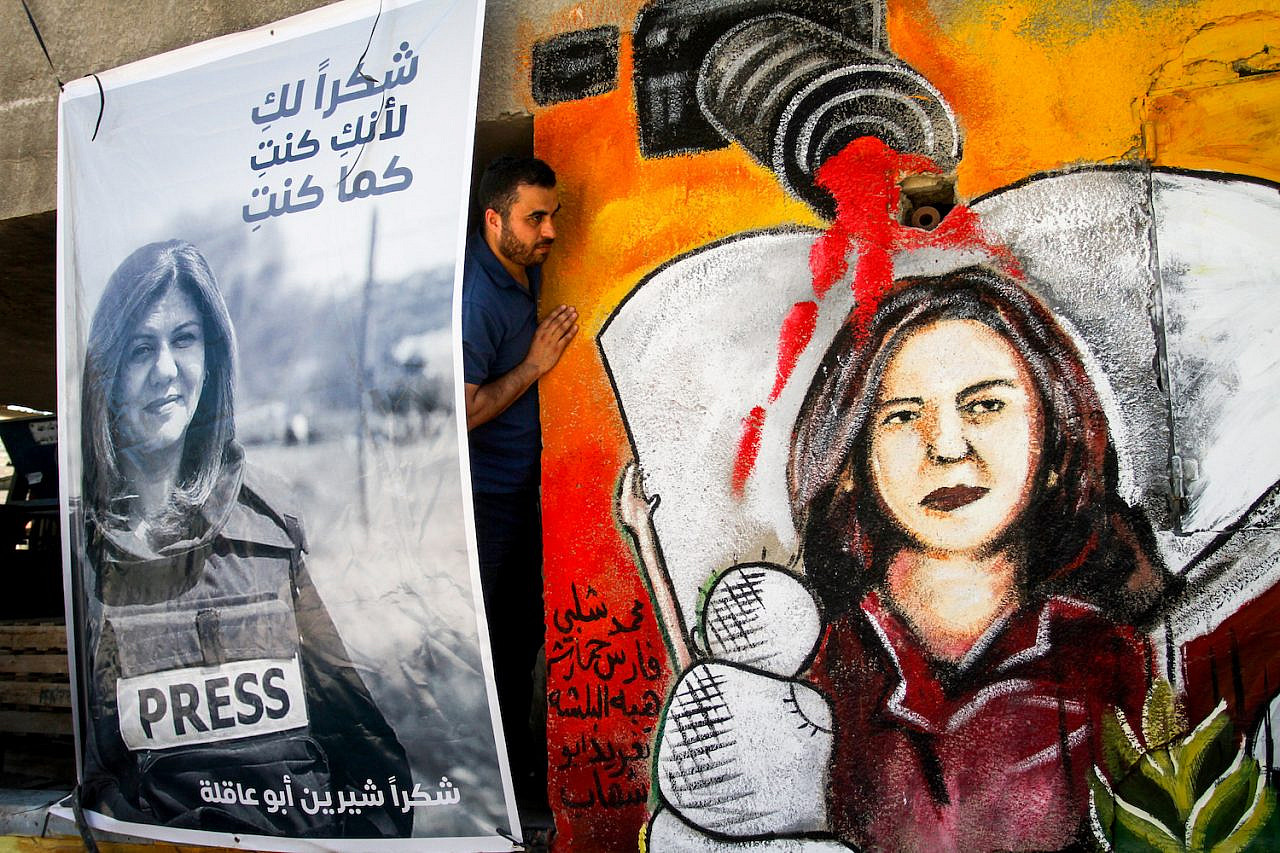
Yet despite claims by the Israeli army and the State Department, there are serious signs that Abu Akleh’s killing was intentional. According to investigations by the aforementioned media outlets, the bullet that hit Abu Akleh was fired from a distance of about 200 meters. Two videos taken shortly before the incident show that the seven bullets that were fired from the same source at Abu Akleh were the only shots fired at the time. Moreover, while it is likely that the army has videos from the soldiers’ body cameras as well as drone footage that could have revealed other details, the Israeli army has not provided any such evidence.
The CNN investigation further showed that the shots fired at Abu Akleh were, in fact, measured sniper bullets, which were fired in a cluster of a very limited diameter. Three bullets hit a nearby tree, and one precisely-aimed bullet went through the narrow opening between Abu Akleh’s flak jacket and helmet and into the back of her head. The bullets’ impact in such close proximity to one another rules out the claim that they were fired randomly, and makes it unlikely that it was accidental. Moreover, there are at least six more bullets, according to CNN, that were fired in the incident that require examination.
Yet even if we momentarily ignore these investigations, Kochavi’s remarks contain an internal contradiction: if it is unknown who shot Abu Akleh, how can it be concluded that the shooting was done in error? The intention of the sniper, after all, can only be determined after their identity has been confirmed. The Israeli media has not dared to question Kochavi’s assessment.
Abu Akleh’s killing understandably made headlines across the world, both due to the journalist’s high-profile stature as the “voice of the Arab world” as well as Israel’s clear attempts to undermine any attempt at finding out the truth. But these obfuscatory tactics that include refraining from ordering forensic examinations of the bullets used, or even shutting down investigations into Palestinian deaths at the hands of Israeli security forces, are by no means new — in fact, they have become an undeniably common practice in case in which Israel shoots dead innocent Palestinians.
Here are just a few cases that help us understand why Israel cannot be trusted to investigate its own soldiers.
Where are the bullets?
In June 2018 the State Attorney’s office withdrew an indictment which was filed against two soldiers from Battalion 188 who had killed a Palestinian minor with a shot in the back of his neck from a close range. The minor, Samir Awad, was back then only 16 years old, did not pose any threat to the soldiers, and, according to the documentation which was published about the incident, it is evident that it was a short chase which ended with Awad’s killing.
The soldiers were prosecuted for the mild offense of reckless use of weapons, because it was not possible to determine who among them fired the lethal shot. That determination could not be made precisely because the Israeli investigative authorities did not bother to collect the magazines of the shooters and did not search for the bullets at the scene. In the end, the case was closed due to the claims of the soldiers that in 110 similar cases which involved soldiers shooting at Palestinians, the shooters were not brought to justice, and it was therefore not fair to prosecute only them.
Another example took place in May 2014, when two Palestinian minors were shot and killed: Mohammad Abu Daher, 16, and Nadeem Nawara, 17, during Nakba Day protests outside Ofer prison, next to Beitunia in the occupied West Bank.
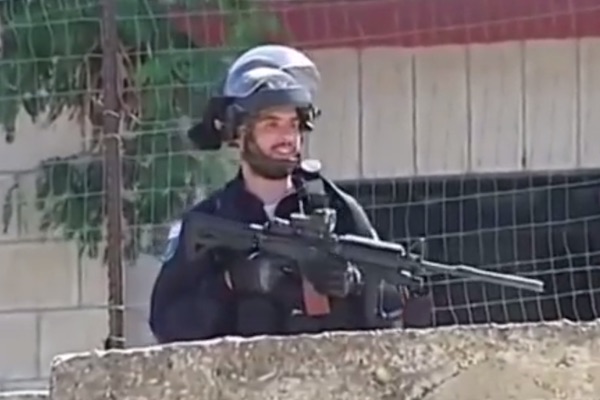
The two were shot by the Israeli Border Police while not posing a threat to anyone, and while there was no stone throwing going on. Abu Daher was even shot in the back. In the beginning, the IDF Spokesperson published false statements about the shootings, but CCTV footage, and subsequent analysis, showed that the shooting was intentional. In that case, however, because the bullet that killed Nawara got stuck in his school backpack, the officer who opened fire was accused of the killing.
However, the Israeli investigative authorities did not bother to look for the bullet which killed 16-year-old Abu Daher in the same incident, and the case was closed. The officer, Ben Deri, was convicted of a minor offense for an act of error, on the grounds that he accidentally used a magazine with live bullets instead of rubber ones.
In another incident, in March 2010, a Kfir Brigade force entered the West Bank village of Iraq Burin, accompanying settlers from Har Bracha settlement who were descending toward the Palestinian village. At the same time, 15- and 17-year-old Mohammad and Osaid Qaddous from the village were going home. An officer testified to the military’s investigation police that he fired two rubber-coated bullets toward the protestors, who stood 70 meters away, and hit one of them in the arm.
In fact, the first shot hit Osaid’s head and the bullet penetrated his skull. The second bullet hit Mohammad in the chest as he rushed towards Osaid. Rubber-coated bullets fired from that range are not lethal. A metal bullet is seen clearly in the autopsy. The officer’s weapon cannot even fire rubber bullets. Half a year after the shooting, a soldier responsible for overseeing the use of firearms in the unit testified that the officer made sure to fake the documents relating to the firearms (such as which soldier used which gun) from the day of the incident. The shooter asked the responsible officer to switch firearms the Saturday following the incident, and to date in the official documents that the switch took place the Thursday before the incident. The military police did not bother to attend the scene after the killing, nor did they collect the bullet which entered and exited Mohammad, and they also did not collect the magazines at the scene. The case was therefore closed, and the officer was promoted.
In August 2014, during a routine military operation at Al-Fawar Refugee Camp, 10-year-old Khalil Anati was shot to death. The army expressed sorrow over the death of the child and promised to investigate. The case was later closed without any convictions for killing of Anati, because, according to the Military Police Investigations Department, it was not able to prove a definite connection between the single shot which was fired by the soldier and the killing of the child. Again, because the bullets were not collected from the scene.
I have investigated dozens of such military police cases, and the list could go on, but the point is clear: it is absurd to unilaterally claim the impossibility of holding an investigation into a fatal shooting because there is no bullet, while on the other hand intentionally not collecting bullets as a matter of routine procedure. If we take that claim seriously, it could be concluded that the IDF intentionally does not prosecute killers of innocent Palestinians.
Deaths in ‘error’
It also bears explaining what, according to the military police, constitutes a killing “in error.” The intent is not judicial or what someone ordinary would explain as “mistake,” but rather another way to avoid prosecution. It is hard to know whether the IDF chief of staff himself believes the claim that soldiers do not ever commit intentional killing, or if it is propaganda aimed at the Israeli public.
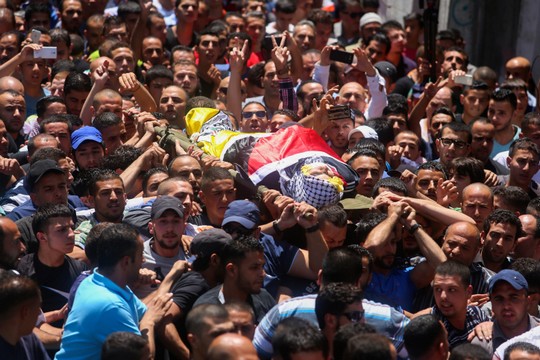
In the case of the aforementioned Qaddous cousins, the officer who intentionally shot both minors made clear on Facebook his attitude toward Palestinians. For example, in July 2014, he wrote that “In Gaza, there are two kinds of insects, [and when] they meet the IDF they go to heaven.” He also liked comments in which Arabs were described as primitive, and leftists as Yehudonim (a derogatory term for Jews).”
In March 2019, a soldier shot to death Alaa Jiyadah close to Bethlehem. All the evidence showed that it was an intentional shooting. A testimony that lawyer Shlomo Lecker shared with Haaretz reveals that a soldier who spoke to the shooter ahead of the killing said of him, “He looked like he wanted to use the weapon, he said he was ready to shoot, in case someone comes he will shoot him, will take off his head… he said a lot that he wants to kill Arabs… the whole time he throws around words about Arabs like ‘I will shoot him, I will handle him.’”
Despite that, the shooter was not convicted after dozens of former military police officers hurried to help him and claimed that he shot by mistake.
On June 21, 2016, at around 1 a.m., a Kfir Brigade officer shot 15-year-old Mahmoud Raafat Badran, from Beit Ur a-Tahta village, in the head, killing him. The shooting took place when Badran and his friends were driving back from a friend gathering to their homes. The next morning, different news websites reported that “a terrorist was apprehended.” It quickly became clear, however, that an officer shot an innocent minor who had bad luck driving in a street close to another street in which stones had been thrown a while before. The shooting was carried out in complete contrast to the army’s open-fire policy, in the direction of a car that did not pose a threat to the force while it was shot. The case was closed after a short investigation, on the grounds that the shooter committed an “honest” mistake; however, he was prevented from participating in a military course he was supposed to attend.
On July 3, 2015, Israel Shomer, a military officer, was driving toward the Qalandiya checkpoint. Muhammad al-Kasbeh, a 17-year-old Palestinian, threw a large stone at the windshield of Shomer’s car and then ran away. Shomer stopped the vehicle, got out, fired two rounds into the fleeing youngster’s back, leaving him wounded and bleeding onto the road without extending him any help. Al-Kasba died from his injuries.
The file on the incident was closed despite the findings that Shomer lied during his interrogation, that his life was not in danger when he shot al-Kasba, and that he contravened the army’s open-fire policy. He had, it was concluded, made a professional error in good faith. Supreme Court Justice Hanan Melcer ruled that “a commanding officer standing trial in a criminal case after making an error in judgment during operational activity in the field, even if it indicates a degree of negligence on his part, raises difficulties and may harm campaign management… and harm the public interest.”
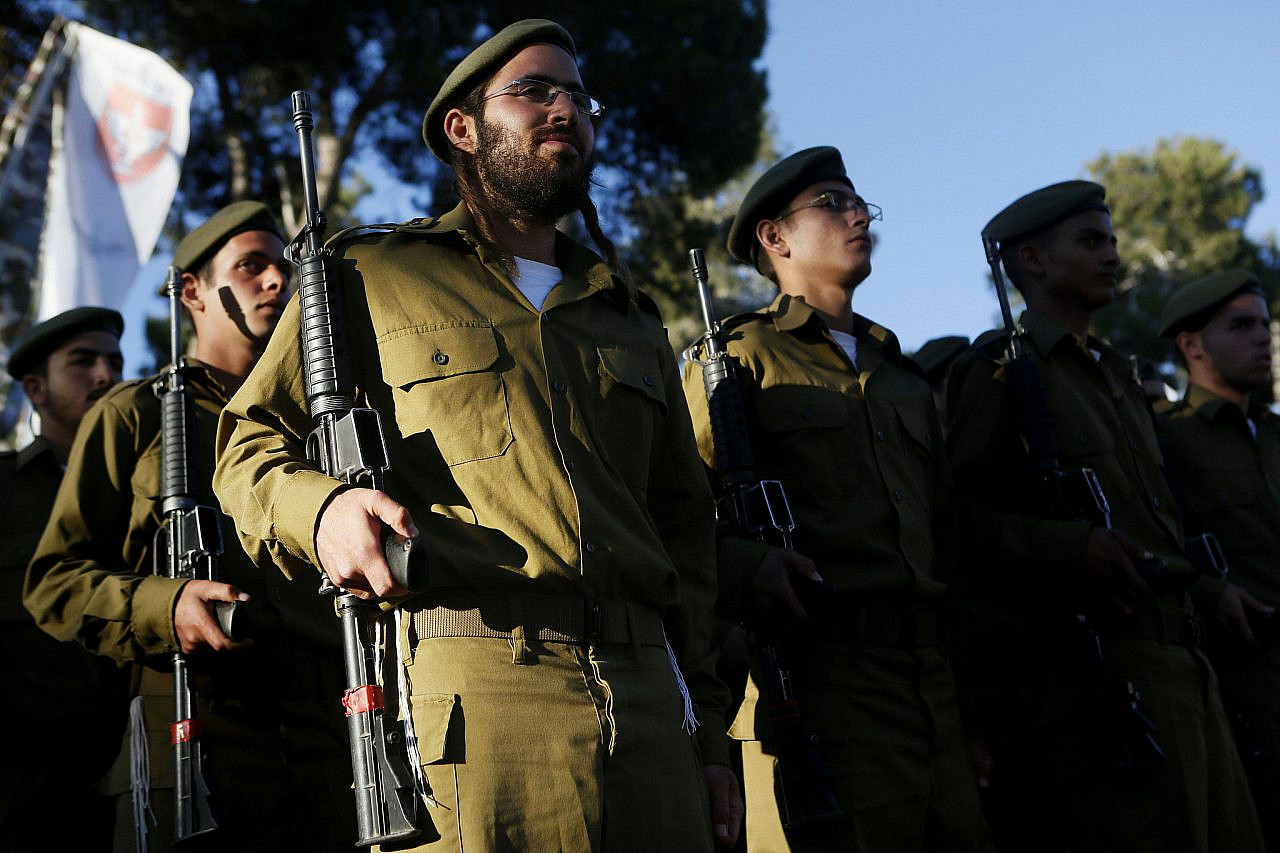
On Oct. 26, 2016, soldiers in the Orthodox Netzah Yehuda battalion shot dead Iyad Hamad, from Silwad, near Ramallah. Initially, the media reported that Hamad had opened fire on soldiers stationed in an observation tower before he was shot. He was therefore immediately dubbed as “a terrorist” who was “taken out.” However, it quickly became clear that Hamad had not opened fire, nor had he thrown a Molotov cocktail (as was subsequently claimed). This is how a Palestinian father of three with intellectual disabilities was shot in the back despite his posing no danger to the soldiers.
The shooter did not stand trial because, the prosecutor claimed, he opened fire by accident — Hamad had been behaving oddly, supposedly because of his disability, and so the soldier assumed he had carried out an attack that he in fact had not, and wrongly shot him in the back. Two weeks later, while being interrogated, he claimed not to remember what happened. A mistake was made, which is strange in light of the fact that members of the same battalion have electrocuted, beat, handcuffed, and humiliated Palestinians.
Similar errors occurred in the killing of Muhammad Musa on March 31, 2017, when Givati soldiers opened fire on him near the Palestinian village of Nabi Saleh, while he was driving away from the village with his sister. The soldiers shot him in the back following a report that a suspicious vehicle might pass by on that road. The investigation was closed because the shooting was apparently a “mistake.” In July 2021, Shadi Lutfi Salim, 41, was shot near the village of Beita close to Nablus. The shooters, soldiers in the Kfir Brigade, claimed that Salim was an armed suspect. In fact, he was a plumber holding a faucet key so that he could open the water pipe to the village, which settlers from a nearby outpost regularly damage. Another error, case closed.
The following day, Israeli soldiers shot dead Muhammad al-Alami, 12, while he was in a car with his father in their hometown of Beit Ummar. When he saw the soldiers, the father turned around for fear that they would open fire, and one of them indeed sprayed the car with bullets and killed the child. An accident.
In a separate incident, another Kfir soldier fired 29 bullets at the Qawarik cousins while they were handcuffed close to a settlement, and afterward claimed that one of them had a pitchfork. Except there was no pitchfork, so the soldier changed his claim to a syringe. But there were no fingerprints on a syringe that was found in the field.
In March this year, Israeli soldiers fatally shot Amar Shafiq Abu Afifa, 19, just outside the Al-Arroub Refugee Camp, while he was hiking with a friend. They wrongly believed that he was a “terrorist” despite his not having done anything. In 2014, not far from the scene of that shooting, Israeli soldiers fired a warning shot that hit 21-year-old Lubna Hanash in the head, killing her, as she left the college where she was studying. No one was charged.
The list goes on. The fact is that when the military uses the term “error” in this very elastic way, it can define absolutely everything — from unloading bullets on a car using a semi-automatic rifle on civilian roads, to fatally shooting another youth in the neck — as a mistake, despite all the evidence pointing to the contrary.
A few months ago, I spoke with two former senior officers in the military prosecution, who now act as private defense attorneys for police officers and soldiers. Their case against their clients standing trial, which was unsurprising in light of the cases mentioned above, was that the military prosecution, when it comes to examining evidence against soldiers, is actually trying to find a reason to avoid prosecution. This mechanism cannot fail. Evidence is not collected and therefore there is no evidence with which to mount a trial.
If the shooter is unlucky and outsiders do gather evidence and document the incident, the argument then becomes that an error was made, as absurd and baseless as that is. Given that these investigations are managed internally, they are not currently under supervision. In Israel’s Supreme Court, allegations are examined in light of the Israeli army’s own investigation, under the accepted maxim that the IDF is the most moral army in the world. At the very worst, therefore, they have erred or been negligent, yet as Melcer explained, this, too, is not grounds for prosecution. For the Israeli public, there is no need to go into detail.
It is clear that whether it is Shireen Abu Akleh, Alaa Jiyadah, Muhammad Musa or any of the many, many Palestinians killed by Israeli soldiers, Israel will not find evidence of the intention of the shooter, because it has no desire to find such evidence. Only independent criminal investigations — under fastidious international supervision at every single state of the investigation, followed by trials for the killers — will be able to, at the very least, pave the path toward justice. Anything short of this means only continued impunity for Israel, its occupation, and its occupying soldiers.

